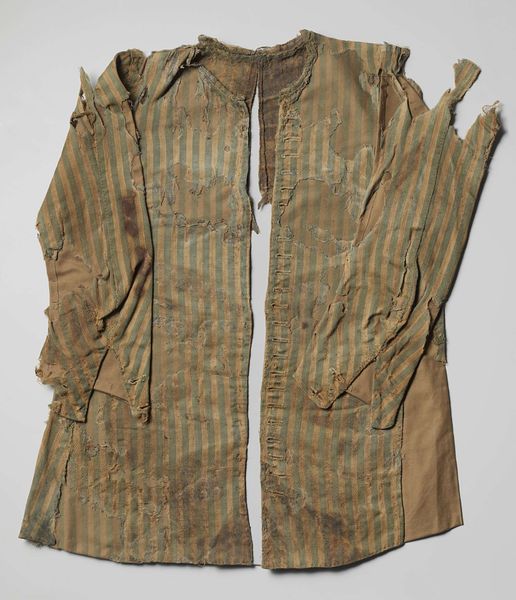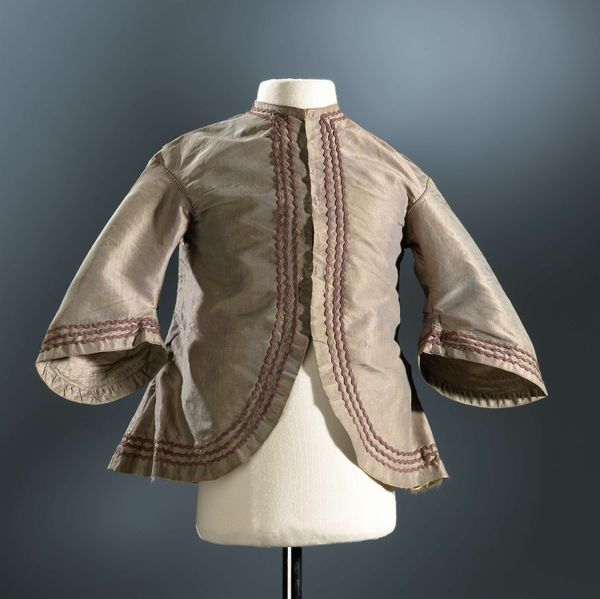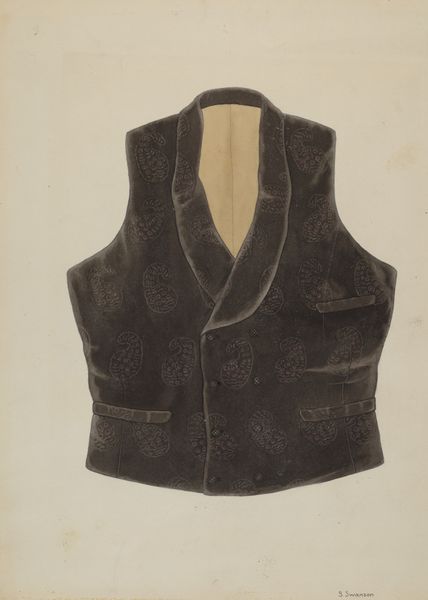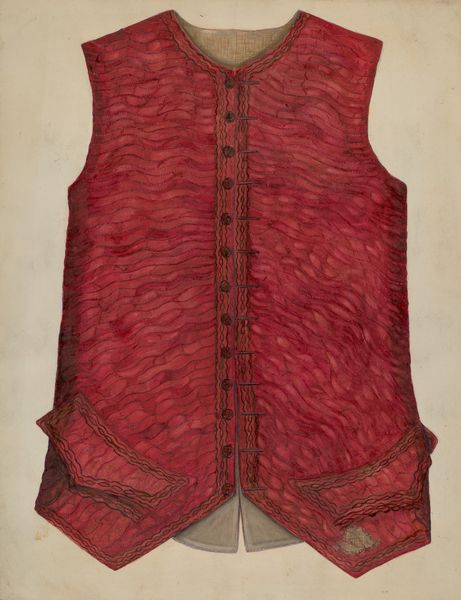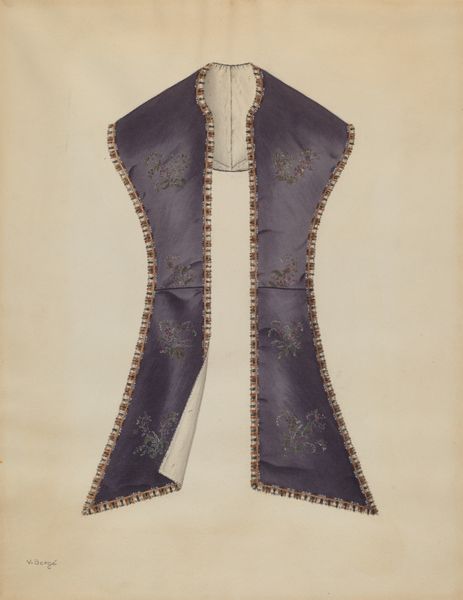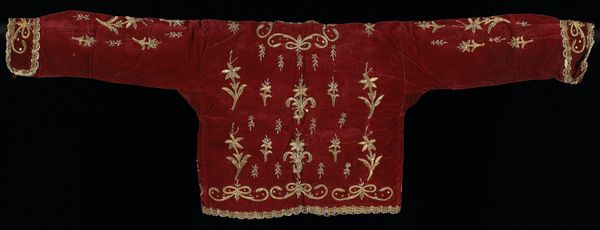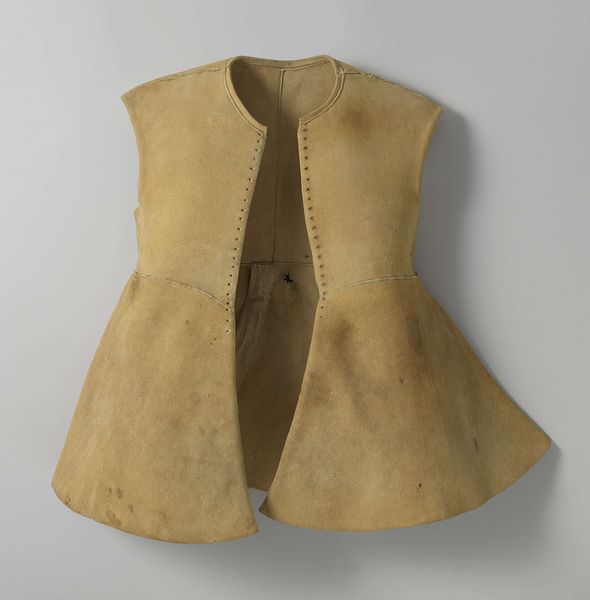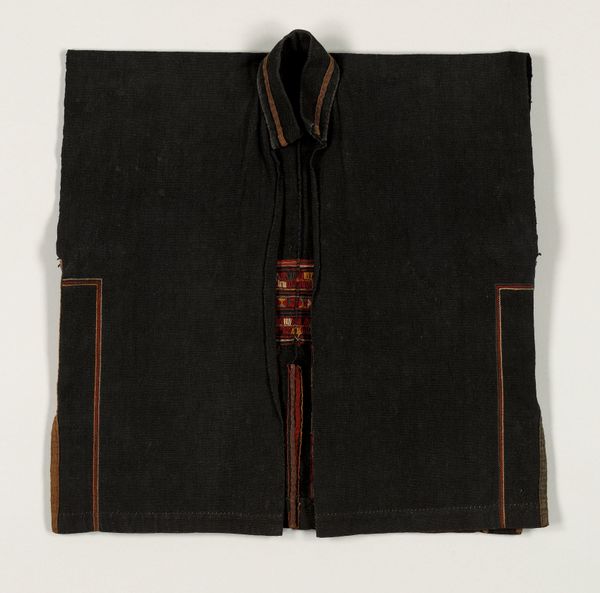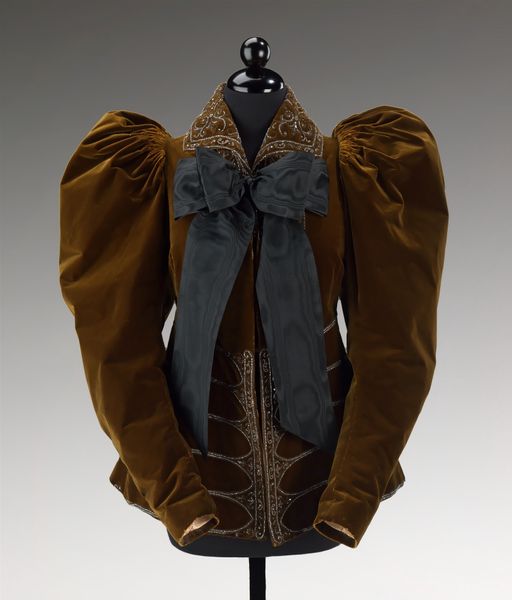
fibre-art, textile
#
fashion design
#
african-art
#
underwear fashion design
#
fibre-art
#
fashion mockup
#
textile
#
collage layering style
#
fashion and textile design
#
fashion based
#
wearable design
#
clothing theme
#
clothing photo
#
clothing design
Dimensions: 17 × 18 3/16 in. (43.18 × 46.2 cm)
Copyright: Public Domain
Curator: Here we have a remarkable "Vest" crafted around 1800 by an Unangan or Alutiiq artist. It’s part of the Minneapolis Institute of Art’s collection and fashioned from fibre and textile elements. The artistry is just stunning! Editor: Immediately striking is the texture, isn't it? The juxtaposition of what seems like leather with finer thread work around the edges gives a real sense of durability combined with detailed artistry. I'm imagining this vest being worn in a harsh climate. Curator: Indeed. Consider the social conditions: this was made by a member of the Unangan or Alutiiq peoples, groups historically subject to colonial influence. Wearing this might have symbolized cultural identity, resistance, and perhaps even subtle defiance in a world pressing down upon them. Editor: Looking at the linear designs – the carefully repeated squares and bands – I can’t help but see echoes of older symbolic languages, perhaps even a visual echo of community identity or status. This repetition almost becomes a form of silent declaration. Curator: Absolutely! We see examples of textile arts that operate as sophisticated signaling devices. Given the history of the period, this “Vest” communicates not just about personal aesthetics, but also speaks volumes about survival, resilience, and identity. Editor: And what about the emotional significance of clothing generally? As protection, as identity, but also how garments might accrue memory. If this vest could talk, what stories would it whisper about its owner and its journeys? Curator: Such a necessary, emotional dimension to consider! When objects like these are re-contextualized and placed within the halls of institutions like museums, we have the opportunity to investigate their history through various perspectives, from art historical methodologies to ones focused on cultural impacts. It really does open up new levels of appreciating the art piece! Editor: A final, thought – imagine making this entire piece by hand! The skills, the time, the intimate connection with the material…it's really inspiring to think about. Curator: Exactly. So much we have to learn and consider with even just a glimpse! Editor: It really gives a rich idea of a story that clothing might whisper throughout history, doesn't it?
Comments
minneapolisinstituteofart about 2 years ago
⋮
The Unangan and Alutiiq live on Kodiak Island and the lower part of Prince William Sound, in what is now Alaska. The woman who made this vest in the early 1800s used materials available in the Arctic, embellishing the basic sealskin garment with red wool from trade with Euro-Americans, bird quills, and other animal and bird parts that add color and texture. The zigzag designs on both sides are made from bird quills sewn onto the hide with sinew. This small vest was probably worn by a child, most likely for celebratory occasions. It is a rare item, and only one other like it is known to exist in the National Museum of Finland.
Join the conversation
Join millions of artists and users on Artera today and experience the ultimate creative platform.
